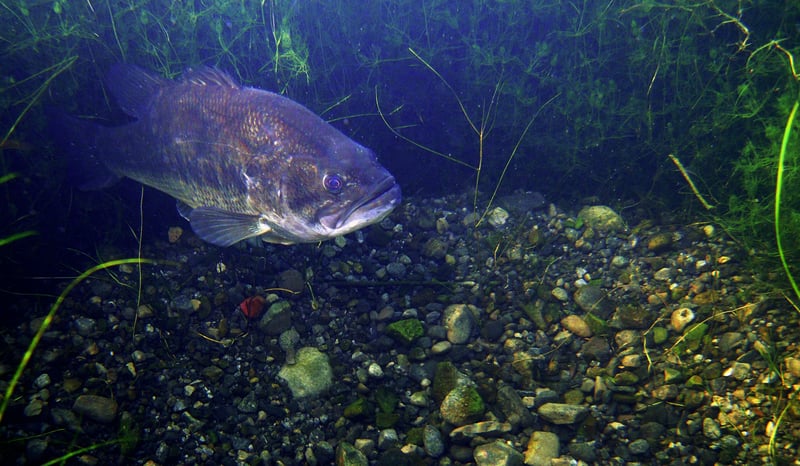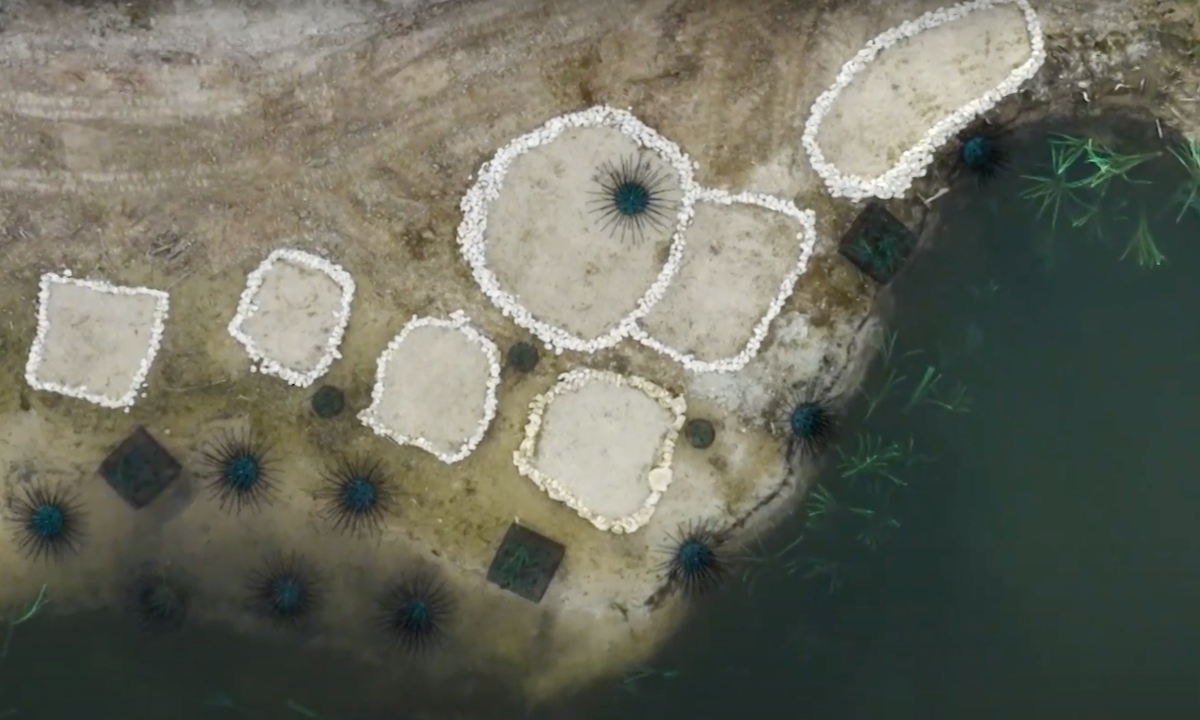Great fisheries management starts from the ground up and there is no place where that is more apparent than in the spawning areas.
Increase Recruitment Rates with Spawning Habitat
It doesn't matter if you are trying to improve catch rates or catch weights or if you're managing a public fishery or the bass pond in your backyard.
If you want better quality largemouth, you need a sustainable broodstock of forage fish. At Pond King, we use various management techniques to create a steady supply of forage fish, but at the very heart of it is ensuring you recruit more fish back into the population than you lose to predation and other environmental factors.
A great place to start is ground level - ensuring you have ample habitat in your spawning areas.
Fundamentals of Spawning Beds

First, let's understand the fundamentals of spawning beds.
Both Largemouth Bass and Bluegill build beds, or 'nests,' to deposit their eggs. Both species will build their beds in various areas and substrates but are particularly fond of gravel or sandy bottoms. They like to build their nests in areas with a firm bottom, with materials such as sand or gravel, so they can dig out the center, leaving their eggs exposed so the parent can fan the bed to provide fresh, oxygenated water as the eggs develop. They both are the same in substrate utilization - protected areas, water depths, and fanning their beds to provide sufficient oxygen availability.
Their difference comes in the time of the year they spawn, and that Bass are more solitary spawners, and Bluegill will spawn in a colony.
Also, Bluegill will utilize the same areas that Bass have spawned in once it is their time of year to spawn.
Should You Build or Buy Habitat for Spawning Areas
Once you have assessed your need for additional spawning habitat, you'll need to determine how you'll augment it.
- Do you need more Bluegill beds or more Bass beds?
- Do you have sufficient shallow areas?
- Are the spawning areas seasonally exposed?
- Or are the beds always submerged?
Answering these questions will help you determine if you can create more spawning flats - areas with the right profile and material - or if you need to provide artificial spawning habitat.
Building a New Spawning Habitat Area
If you are starting from scratch - building your tank, pond or lake by removing material until you've achieved the desired profile for your fishery - or if you have a body of water that fluctuates throughout the year exposing the spawning areas, you're in an enviable position.
You can ensure you have the proper slope and depths for your beds - both Bass and Bluegill like to spawn in shallow water, typically 2-to 4-feet, but sometimes deeper.
You can also ensure you leave enough room so you can set your Bluegill beds apart from the Bass flats and that you leave enough room for the Bass to build nests away from their neighbors.
How Do You Build Spawning Beds for Bass and Bluegill?
To build spawning beds, start by selecting locations with a firm bottom and, if necessary, level the surface. Then, build a retaining wall around the areas you've identified. You can just use stones and rocks collected from the surrounding area to build a 4- to 6-inch retaining wall.
This ensures two things:
- You'll be providing a sufficient depth of loose material for the fish to make their beds
- You'll keep the loose material in the desired location
Once you're satisfied with your retaining walls, you're ready to add the loose material.
We recommend using pea gravel because the Bass can easily maneuver the media to construct their beds, and it is small enough for the Bluegill to pick up individual pieces with their mouth to form their nests.
How Do you Build a Spawning Area In an Existing Lake?
If you have an existing pond or lake with water that doesn't fluctuate enough to expose the spawning flats, or if it has a soft silty bottom, you'll need to take a different approach because, in either of these situations, it just isn't very efficient or effective to build flats.
If the water never drops to expose the flats, you could try to build these structures, but you'll be doing it standing in a couple of feet of water and will have very limited equipment options, so it's just not very practical.
If you build on a silty bottom, you'll end up with pea gravel covered with silt. In this situation, our Honey Hole Spawning Discs will be your best option.
The Spawning Disc will help to provide a firm bottom for both Bass and Bluegill to deposit their eggs in, preventing the eggs from suffocation. The disc's large surface area will resist sinking into the pond floor like gravel would, and they are much easier to install while the water levels are still at full capacity.
Protect the Fry Outside the Spawning Flats

In either situation, to get the most from your spawning habitat improvements, you should add habitat to keep the fry from predation when they start to venture out.
Brush piles, aquatic vegetation, and artificial structures located near the spawning flats will limit the amount of time the fry are exposed to predation, increasing the likelihood that they'll make it to the intermediary life stage.
If you want the most protection available on the market today, consider the Honey Hole Nursery. This habitat is an enclosed structure offering complete protection from larger predators until these fish are better able to evade predation. And, the Honey Hole Shrub is also highly effective in these situations. The refuge cavity created in the structure's main body, along with the complex, dense limb construction, provides excellent cover for both fry and juvenile fish.
Implementing these changes to your spawning areas should help create a broodstock of forage fish, enhance the spawning habitat for your Bass, and eventually reduce your need for supplemental stockings, ultimately reducing your pond management budget.
Ask Pond King about Enhancing Your Ponds Spawning Habitat
If you have any other questions about enhancing the habitat in your spawning areas, or creating a broodstock of forage fish, feel free to contact Pond King or call one of our fisheries biologists to see how we can improve your pond's upcoming spawn!
See y’all down at the pond.





